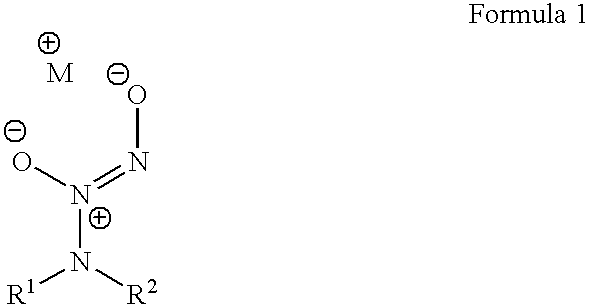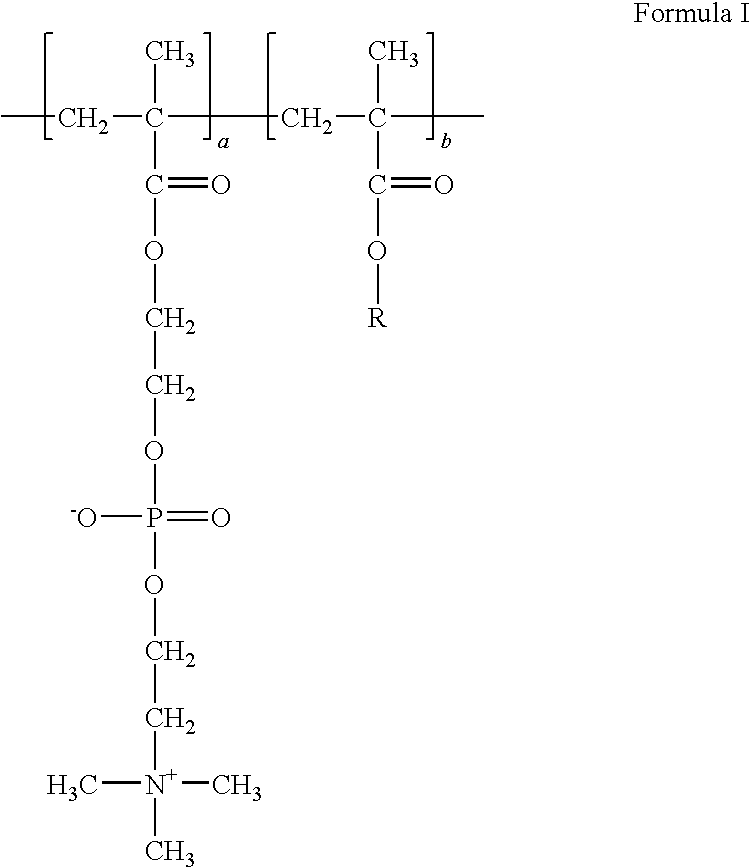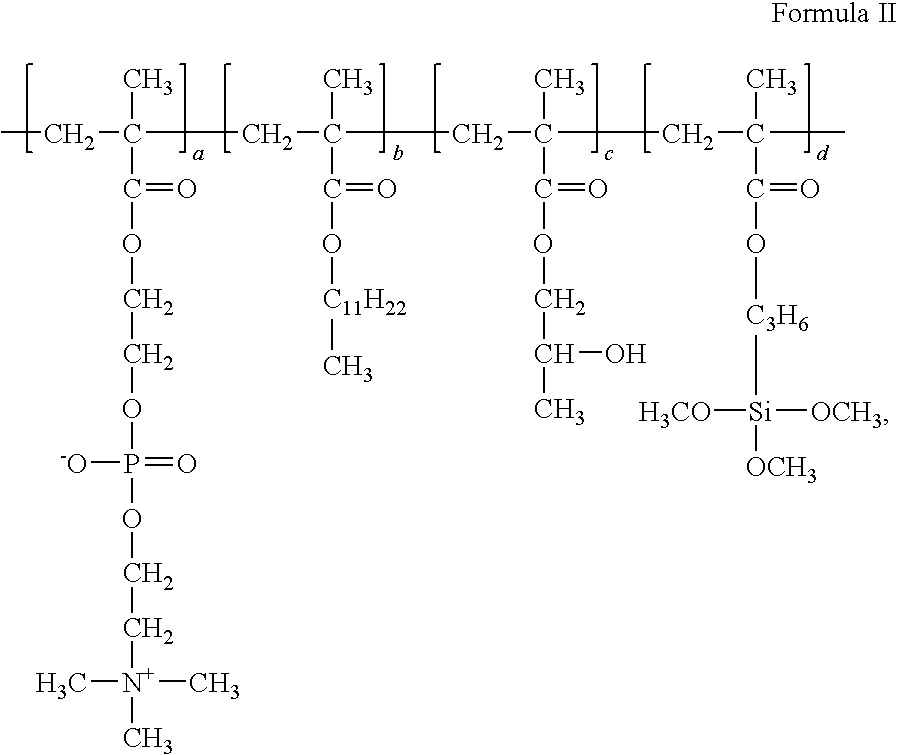Diazeniumdiolated Phosphorylcholine Polymers for Nitric Oxide Release
a technology of phosphorylcholine and diazeniumdiolated phosphorylcholine, which is applied in the field of biocompatible nitric oxide donating polymers, can solve the problems of biocompatibility of polymers with pc functional groups, and achieve the effect of superior biocompatibility
- Summary
- Abstract
- Description
- Claims
- Application Information
AI Technical Summary
Benefits of technology
Problems solved by technology
Method used
Image
Examples
example 1
Preparation of Diazeniumdiolate
[0068]
[0069]2.00 g of PC-1036 polymer was dissolved in 70 mL of THF and 10 mL of methanol. The solution was transferred to a 600 mL Parr reactor, and 16 mL of 1M sodium trimethylsilanolate in THF was added to give a clear solution. The reactor was sealed up and purged with argon through ten argon fill / vacuum cycles. Nitric oxide was charged into the apparatus at 80 psi. The reaction was stirred for 2 days. The pressure dropped to 60 psi. Polymer was isolated by evaporation of the solvent and solid polymer was washed with THF and dried at room temperature under vacuum.
example 2
Nitric Oxide Release of Diazeniumdiolated PC Polymer
[0070]9.62 mg of the diazeniumdiolated polymer from example 1 wrapped in cloth was transferred to a test tube and added 5 mL of PBS buffer (pH=7.4). The test tube was incubated at 37° C. The nitric oxide released was accumulated for 8 minutes and swept out of the test tube with a 90 mL / min argon flow for 2 minutes and analyzed with NOA 280i (GE Analytical Instruments) nitric oxide analyzer. The accumulation and analysis cycle was controlled with an actuator. The diazeniumdiolated PC polymer released about 0.08 μmol / mg of nitric oxide in three days.
PUM
| Property | Measurement | Unit |
|---|---|---|
| Biocompatibility | aaaaa | aaaaa |
| Bioactive | aaaaa | aaaaa |
Abstract
Description
Claims
Application Information
 Login to View More
Login to View More - R&D
- Intellectual Property
- Life Sciences
- Materials
- Tech Scout
- Unparalleled Data Quality
- Higher Quality Content
- 60% Fewer Hallucinations
Browse by: Latest US Patents, China's latest patents, Technical Efficacy Thesaurus, Application Domain, Technology Topic, Popular Technical Reports.
© 2025 PatSnap. All rights reserved.Legal|Privacy policy|Modern Slavery Act Transparency Statement|Sitemap|About US| Contact US: help@patsnap.com



